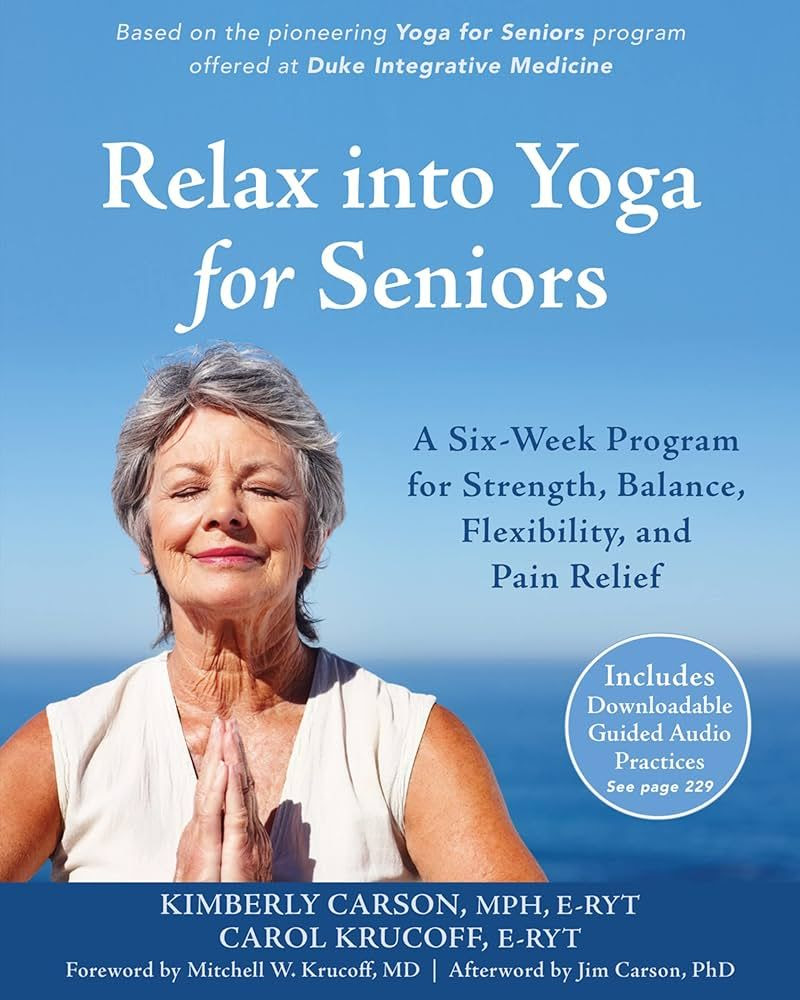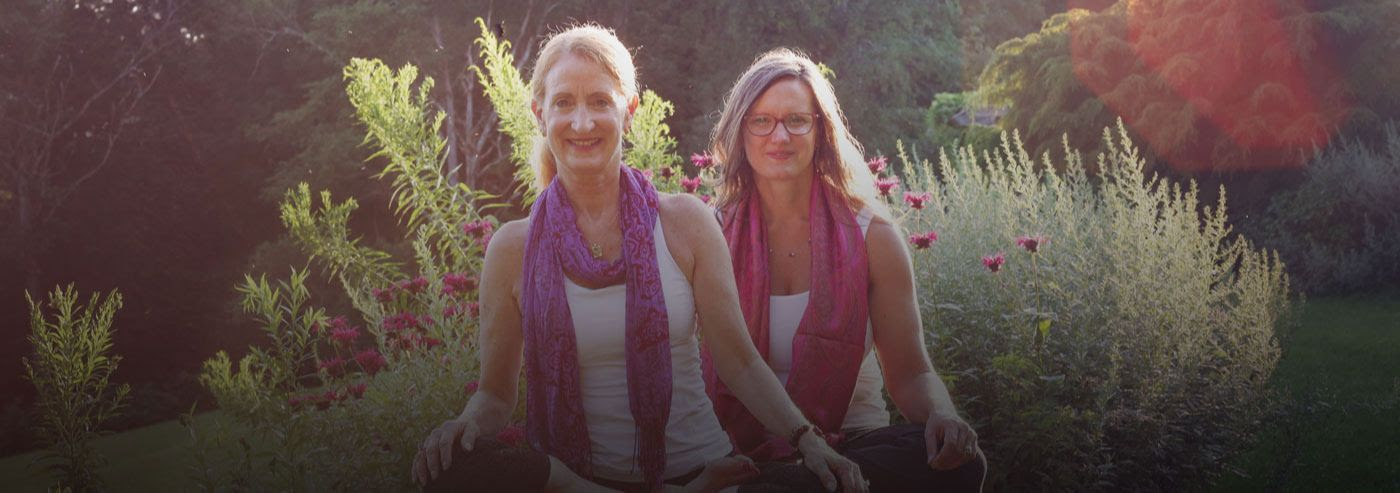6 Ways to Inform your Yoga Practice when Teaching Yoga to Older Adults
Nov 02, 2023"This kind, mindful approach is often quite surprising to new students, and we have found that helping people connect to their own inner wisdom is transformative."
–– Carol Krucoff & Kimberly Carson
Unfortunately, many yoga instructors are unaware of the physiology of aging, and how some commonly-taught yoga poses can be risky for older adults.
6 Ways to Inform Your Yoga Teaching
For most older adults, especially those new to the practice, we recommend:
- Straight-legged forward bends. We encourage students to hinge at the hips (not at the waist), bend their knees, and keep their spine in a neutral alignment when folding forward.
- Seated postures on the floor. Since most older adults are unable to sit comfortably on the floor with a neutral spine, we teach seated poses in a chair—and let the chair back serve as a support when we do standing poses.
- Head-below-the-heart inversions. Inverted postures may be risky for people with cardiovascular concerns
- Keep the breath flowing and comfortable. Breath-holding can affect blood pressure and is inadvisable for people with heart disease and/or hypertension. While gentle and very brief suspension of the breath may be fine, forced or prolonged breath holding should be avoided.
- Keep twists in mid-range with a fluid quality of motion. Deep twists are contraindicated for people with low bone density.
- Avoid extremes of movement and breathing. Extreme movements may put people at risk of injury and extreme breathing practices such as Kapalabhati and Bastrika may be problematic for people with heart disease and/or hypertension.
🔍 It’s imperative that yoga instructors create a safe environment for these students, because it’s sadly quite common to find people who say the supposedly healing practice of yoga caused them pain, injury, or distress.
🔍 Like any therapeutic intervention that offers health benefits, yoga practice also carries potential risks, which may be heightened in vulnerable populations such as older adults.
🔍 The aging human body tends to be slower to react and recover, the cardiovascular system loses elasticity and resilience, bones weaken and muscle mass and even cognition may decline
“Relax into Yoga” In a culture committed to doing, striving, and pushing, Our Relax into Yoga approach cultivates the critical counter-balance of undoing, of slowing down, of savoring the moment and knowing more fully what life is presenting right now. Our work with people at midlife and beyond has highlighted the essential need to develop awareness, ease, and a compassionate relationship with the body. Learn more from Yoga 4 Seniors
Yoga & Aging
Yoga helps people age well, and older adults are increasingly drawn to the practice as a growing body of research suggests it has powerful health benefits for body and mind. These include reducing the risk of age-related disorders such as cardiovascular disease and metabolic syndrome, as well as improving blood pressure, heart rate and insulin resistance and relieving anxiety, depression, and chronic pain. One study even described improvements in biological markers of aging, suggesting that yoga and meditation “may hold the key to delay aging or aging gracefully.”
Yet, even though more than a third of Americans who practice yoga are age 50 or older, media images typically portray yoga practitioners as slim, bendy youngsters.
As yoga therapists who have spent more than two decades specializing in making yoga safe and accessible for older adults, we often hear seniors wistfully say, “I’m not flexible enough to do yoga” and mistakenly assume that yoga isn’t for them. We’re quick to assure them that they don’t have to touch their toes, sit cross-legged on the floor or even get out of bed to practice yoga and reap its many rewards. In fact, the only thing you need to be able to do to practice yoga is breathe.
Of all age groups, seniors are the most complex and varied, with some able to run marathons and others unable to get out of bed. Approximately 85 percent of older adults have at least one chronic health condition and 60 percent have at least two. The average 75-year-old in America has three chronic conditions and takes five medications—many of which may have side effects, such as dizziness, that can affect yoga practice.
Teaching Yoga to Seniors ☀️ 20-hour self paced online course
Study with Kimberly and Carol in the comfort of your own home with this 20-hour certificate course. Teaching Yoga to Seniors. Our in-person 50-hour master training, offered annually at Duke Integrative Medicine, is designed to give yoga instructors the skills and confidence to safely and effectively teach older adults. The course text for both is our book, Relax into Yoga for Seniors: A Six-Week Program for Strength, Balance, Flexibility, and Pain Relief.
Stay connected with news and updates!
Join our mailing list to receive the latest news and updates from our team.
Don't worry, your information will not be shared.
We hate SPAM. We will never sell your information, for any reason.




